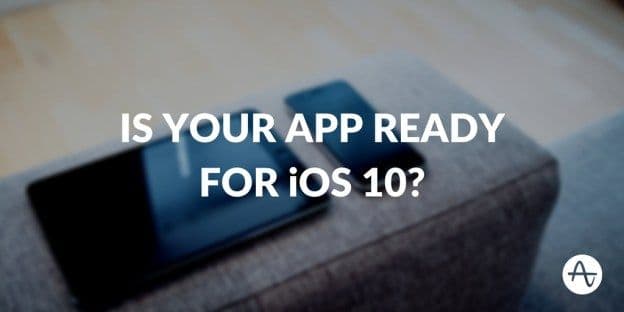Is Your App Ready for iOS 10?
Here are four iOS 10 updates that may affect your app’s user engagement.
Building a mobile app for iOS? Apple’s biggest iOS update offers unprecedented opportunities for developers, marketers, and product teams to reach their users more deeply. Now that you can build integrations into Apple’s core services like Messenger and Siri, you have an opportunity to extend your app’s influence and engage users like never before.
In the light of iOS 10, it’s time to take a closer look at your application and re-assess your user engagement tactics and make sure make sure you have the right analytics in place to track them. Here are four iOS 10 updates that may affect your app’s user engagement.
1. Rich Notifications
Marketers can now engage their iOS users with rich notifications–push notifications that can have images, video, audio, animated GIFs, and even buttons directly appended to them–a capability that has been available for Android since 2011.
Why does this matter? Highly personalized, well-timed push notifications can bring back inactive users to your app–adding a touch of multimedia creativity can go even further toward inspiring action. In fact, Urban Airship found that Android rich notifications have a 56% higher response rate to notifications with pictures versus those without. (source)
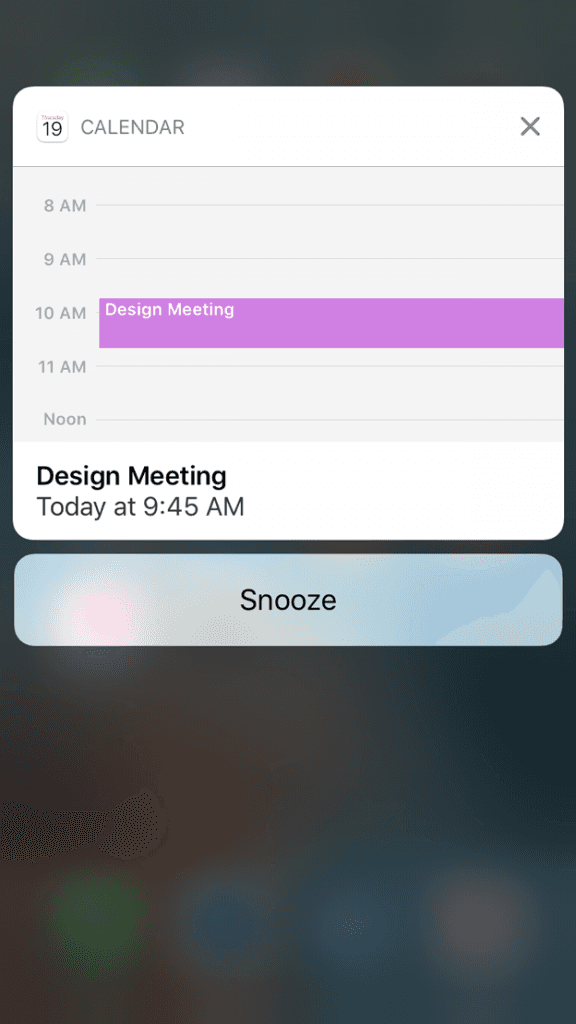
Things to consider:
- With rich notifications, copy isn’t the only thing to keep in mind. The media you include in your notifications needs to be strategic and on-brand.
- Don’t go crazy with audio and video and overwhelm your user. Think strategically about when and why you need rich notifications and include context.
2. Widgets
Keep your app on top of users’ minds by creating a widget–a mini version of your app that users can interact with straight from their Lock screen. Widgets provide specific functionality or useful information to the user without the user having to open up the app. Users who want to engage more may also be taken to the actual app or prompted to login to their account straight from the widget. (source)
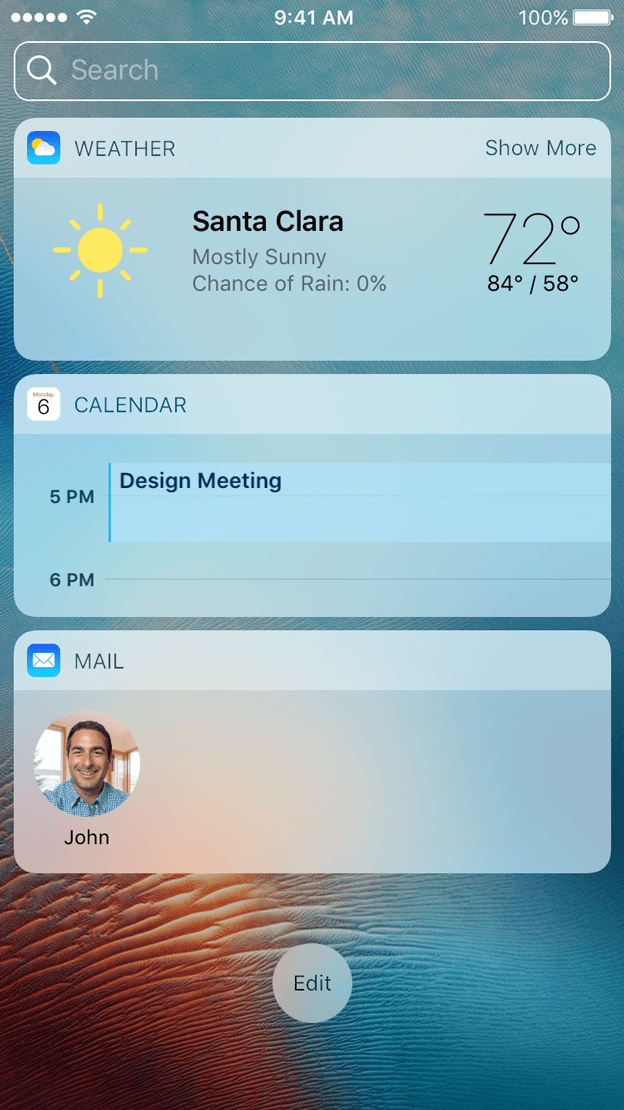
Things to consider:
- Track widget-specific user actions and metrics–e.g. how many people are clicking buttons or otherwise interacting with your widget, how many people are installing them, etc.
- Do funnel analysis to see how many users convert after coming in through your widget (or retention analysis to see how many users come back). Get a sense of whether it makes sense to allocate resources toward developing a really good widget(s).
3. Raise to Wake
One of the biggest changes to iOS is replacing the iconic “Slide to Unlock” feature and the Touch ID with “Raise to Wake.” Using Apple’s latest motion coprocessors, “Raise to Wake” automatically turns on your iPhone 6 or 7’s display when you pick it up from a table or raise it toward your face.
If users keep Raise to Wake enabled, this means more time and opportunity for them to view and/or engage with rich notifications and widgets. This partially solves the challenge that users of Apple’s latest Touch ID sensor face–the sensor wakes the device so quickly that many users skip over all of their notifications. Raise to Wake, on the other hand, allows users to take their time glancing over their widgets and notifications without ever leaving the Lock screen. *
(source)*
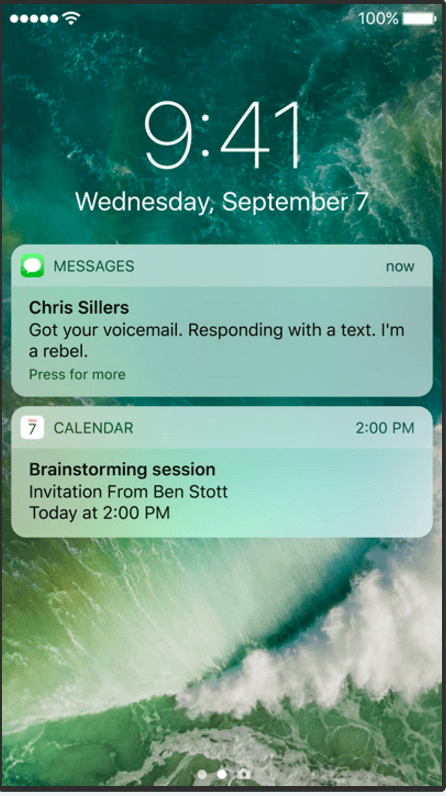
Things to consider:
- If notifications are going to stick around longer, you’ll have to put in that much more effort to craft the right type of message. Mobile marketing teams should continue to optimize their push notifications and also take into consideration the way that iOS 10 has changed them.
4. iMessage Extension
Yet another way to extend your app’s reach in iOS 10 is through creating an iMessage extension of your app. This extension “allows users to access features of your iOS app without leaving Messages,” Apple describes on the iMessage feature page.
In the example below, the Evernote iMessage extension allows users to search for and share projects with friends directly, without ever having to leave the Messages app. (source)
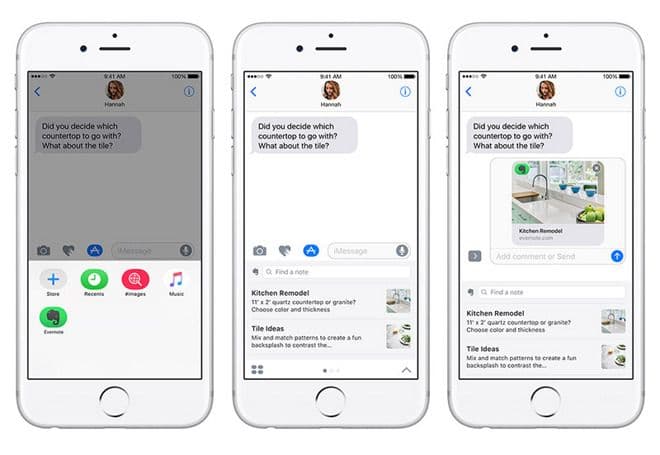
Things to consider:
- Think about whether your analytics is setup to track user actions that actually happen within Messages. Are users who never open your app, but use the iMessages extension still tracked properly and considered active?
Conclusion
Taking advantage of iOS 10’s shiny new bells and whistles means a lot of engineering time, so don’t take these suggestions to mean that your app needs an expensive overhaul. If you are bringing your app to iOS 10, keep in mind the ways your updates to affect your long-term user engagement metrics and the analytics your using to track them.
Want to read more about Apple on the Amplitude Blog? Check out these posts:

Archana Madhavan
Senior Learning Experience Designer, Amplitude
Archana is a Senior Learning Experience Designer on the Customer Education team at Amplitude. She develops educational content and courses to help Amplitude users better analyze their customer data to build better products.
More from Archana
